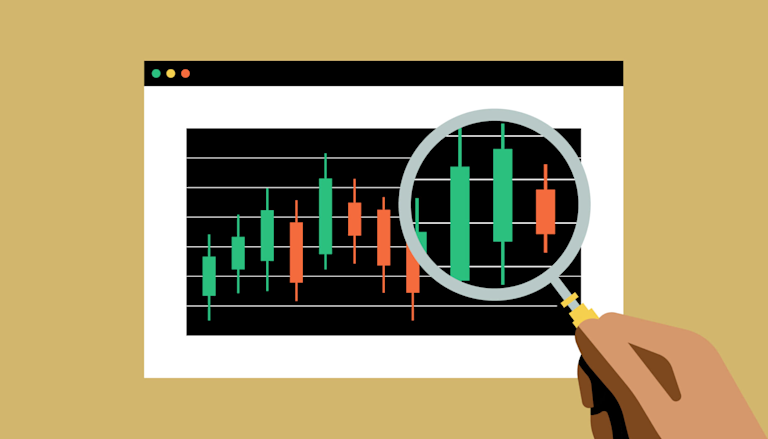Understanding Crypto Trading Risk Navigating the Digital Financial Landscape

Understanding Crypto Trading Risk: Navigating the Digital Financial Landscape
Cryptocurrency trading has rapidly gained popularity, attracting a diverse range of investors and traders. However, with the allure of high returns comes significant risks. In this article, we will delve into the different types of risks associated with crypto trading, strategies to manage these risks, and how to enhance your trading knowledge in a constantly evolving market. For those interested in broader discussions about risk management in different contexts, you might find this insightful link helpful: Crypto Trading Risk http://www.freedomsphoenix.com/Forum/235871-2018-03-05-selco-explains-how-and-why-to-be-the-gray-man.htm.
The Nature of Crypto Trading Risk
Risk is an inherent part of any trading activity, and cryptocurrency trading is no exception. The volatility of digital currencies can lead to large price swings within a single day, making effective risk management crucial for traders. Here, we will categorize the main types of risks in crypto trading.
1. Market Risk
Market risk, also known as systematic risk, refers to the potential loss due to factors that affect the overall market. Unlike individual securities, market-wide factors influence cryptocurrencies, including regulatory news, technological advancements, and macroeconomic changes. Traders need to stay informed about such developments to navigate market risks effectively.
2. Liquidity Risk
Liquidity risk arises when a trader cannot buy or sell an asset without causing a significant price change. In the world of cryptocurrencies, many altcoins (alternative cryptocurrencies) suffer from low liquidity, making it difficult to enter or exit trades at desired prices. This can lead to slippage, where a trader’s order is executed at a less favorable price than expected.

3. Operational Risk
Operational risk pertains to failures in processes, systems, or people. In crypto trading, this risk can manifest as exchange outages, hackings, or errors in transaction processing. Ensuring that you use reputable exchanges with strong track records is essential for mitigating operational risk. Also, employing secure wallets and performing regular audits can help protect your assets.
4. Regulatory Risk
As the crypto market evolves, so does the regulatory landscape. Different countries have varying regulations regarding cryptocurrency trading, which can significantly impact market behavior. For instance, sudden regulatory announcements can lead to price drops or spikes, creating uncertainty among traders. Staying updated on laws and regulations is critical in this regard.
Strategies to Manage Crypto Trading Risks
While risks in crypto trading cannot be entirely eliminated, they can be effectively managed through various strategies. Here are some techniques traders can employ to minimize their exposure.
1. Diversification
Like any investment strategy, diversification can help lower risk in crypto trading. Investing in a mix of cryptocurrencies (including established ones like Bitcoin and Ethereum, along with lesser-known altcoins) can mitigate the impact of a poor-performing asset on your overall portfolio. Diversifying across different industries and technologies can provide a buffer against market volatility.

2. Risk Assessment and Position Sizing
Before entering any trade, it’s vital to assess the potential risks and rewards. One effective method is determining how much of your capital you are willing to risk on a single trade (often referred to as position sizing). Many traders follow the rule of limiting their risk to a small percentage (e.g., 1-2%) of their total investment capital. This approach helps to prevent catastrophic losses.
3. Stop-Loss Orders
Utilizing stop-loss orders can protect traders from significant losses. A stop-loss order automatically sells an asset once it reaches a predetermined price, limiting potential losses. This is particularly useful in volatile markets, where prices can change rapidly. By defining your exit points, you can adhere to a disciplined trading strategy and avoid emotional decision-making.
4. Continuous Education
Staying informed about market trends, trading strategies, and emerging technologies is one of the best ways to manage risk. Regularly engaging with educational content, attending webinars, and participating in trading communities can help you sharpen your skills and deepen your understanding of crypto dynamics. Knowledge is power in the ever-changing world of cryptocurrency.
Conclusion
Crypto trading presents numerous opportunities, but it also comes with inherent risks that every trader must understand and manage. By categorizing risks, employing effective risk management strategies, diversifying portfolios, and continuously educating oneself, traders can navigate the challenging landscape of cryptocurrency trading more effectively. The key is to remain vigilant, practice due diligence, and approach trading with a balanced mindset. As you embark on your trading journey, remember to keep learning and adapting to the dynamic nature of the crypto market, ensuring you are always prepared for the unexpected.
